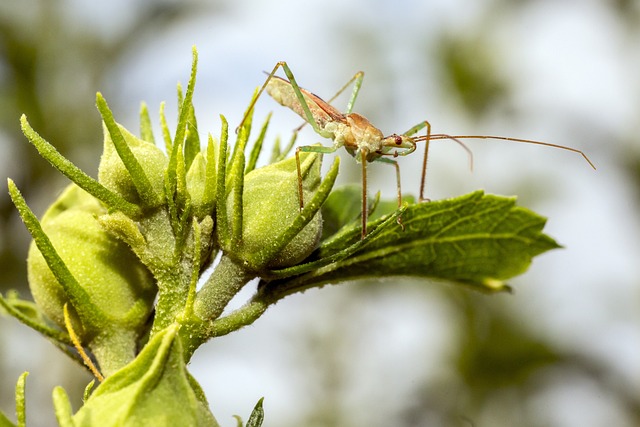Tempe advanced no-gi classes revolutionize MMA training by focusing on bare-handed techniques, speed, and strategic thinking without the traditional gi. Athletes enhance adaptability, creativity, and defensive skills through diverse escape training drills, preparing for competitive wrestling and submission wrestling with enhanced proficiency. This trend reshapes Brazilian Jiu-Jitsu (BJJ) training, emphasizing raw grappling and versatile techniques for local and international tournaments. Proper preparation, including strength and flexibility exercises, reduces injury risk, fostering a positive no-gi training experience.
“In the realm of martial arts, the traditional gi uniform has long been integral to disciplines like Jiu Jitsu and submission wrestling. However, the world of grappling is evolving with a growing focus on Tempe advanced no-gi techniques. This article delves into the advanced basics, benefits, and essential strategies for athletes embracing this dynamic discipline. From understanding key techniques to exploring alternative gear, we explore how no-gi training is revolutionizing combat sports.”
- Understanding Tempe Advanced No-Gi Basics
- Benefits of No-Gi Training for Athletes
- Essential Techniques in Submission Wrestling Without Gi
- Evolving Strategies for Jiu Jitsu Practitioners
- Safety Measures and Risk Mitigation in No-Gi Grappling
- Popular No-Gi Gear: Alternatives to the Traditional Gi
Understanding Tempe Advanced No-Gi Basics

In the realm of Tempe advanced no-Gi, athletes explore a dynamic and nuanced form of grappling that goes beyond the confines of the traditional gi uniform. This innovative approach, often embraced by Tempe MMA no-gi enthusiasts, focuses on bare-handed techniques, emphasizing skill, speed, and strategic thinking. By shedding the gi, practitioners are forced to rely more heavily on body positioning, leverage, and precise timing, fostering a deeper understanding of fundamental grappling principles.
Tempe escape training incorporates diverse grappling flow drills designed to enhance adaptability and creativity on the mat. These drills not only improve an individual’s ability to defend against various attacks but also encourage the development of unique solutions in pressure-filled situations. Whether engaging in intense sparring sessions or meticulously crafted drills, athletes honing their Tempe advanced no-Gi skills cultivate a versatile toolkit that can be applied across different martial arts disciplines and competitive settings.
Benefits of No-Gi Training for Athletes

Training in a no-gi environment offers a unique set of advantages for athletes, particularly those interested in Brazilian Jiu-Jitsu (BJJ) and submission wrestling. One of the key benefits is the development of raw, unadulterated grappling skills. Without the gi’s constraints, athletes are pushed to master techniques like sweeps, reversals, and guard retention through sheer physicality and positional understanding, a focus often absent in traditional BJJ training with the gi.
This style of training enhances overall fitness and athleticism. It encourages athletes to explore a wider range of movements, fostering adaptability and versatility on the mat. Moreover, it helps build mental resilience, as no-gi sparring can be more unpredictable and demanding, mirroring the intensity of real competition. The Tempe advanced no-gi classes cater specifically to this need for progressive training, offering a blend of BJJ hybrid techniques tailored to Arizona’s (AZ) competitive wrestling and submission wrestling athletes, ensuring they stay ahead in their respective fields.
Essential Techniques in Submission Wrestling Without Gi

In the realm of submission wrestling and Jiu Jitsu, the removal of the traditional gi uniform opens up a new dimension of technique and strategy. Athletes in Tempe have embraced this challenge, developing advanced no-gi skills that transcend the limitations of fabric. The focus shifts to leveraging body mechanics, leverage, and precise timing to secure submissions. Key techniques include using the hands and feet for control, manipulating an opponent’s balance, and employing knee cuts, grips, and pins to gain advantageous positions on the ground. These Tempe no-gi conditioning methods not only prepare fighters for competitive ground fights in Arizona but also enhance their hybrid submission styles.
For those engaged in ground fight prep AZ, mastering these techniques is invaluable. The ability to dominate without a gi allows practitioners to adapt to various scenarios, whether facing larger opponents or dealing with unexpected changes in position. By understanding and practicing these essential no-gi techniques, athletes can significantly improve their performance, ensuring they are well-prepared for the dynamic and unpredictable nature of hybrid submission styles AZ.
Evolving Strategies for Jiu Jitsu Practitioners

In the ever-evolving world of Jiu Jitsu (BJJ), athletes are constantly adapting their strategies to suit various competition scenarios. The traditional gi, once a staple in BJJ, is increasingly being set aside in favor of no-gi contests. This shift has prompted practitioners to develop new techniques and refine existing ones tailored for grappling without the gi’s constraints. Tempe advanced no-gi classes have become hotspots for BJJ hybrid training, where students learn to master sweeps and reversals with an emphasis on raw strength and technical precision.
The move towards no-gi conditioning in Tempe isn’t just about shedding the gi; it’s a strategic decision to prepare for a diverse range of competitions. By focusing on sweeping and reversal techniques in Arizona, BJJ athletes gain versatility and adaptability, crucial skills in dynamic match scenarios. This evolution not only pushes the sport forward but also offers practitioners an edge in both local and international tournaments, where no-gi rules are increasingly prevalent.
Safety Measures and Risk Mitigation in No-Gi Grappling

Engaging in no-gi grappling offers a unique and dynamic challenge for athletes, but it also demands careful consideration of safety measures to mitigate risks. Without the traditional gi uniform, which provides some level of restraint and control, the focus shifts to developing raw strength, technique, and agility. This shift necessitates a different approach to training, emphasizing controlled drills and escape techniques. Tempe advanced no-gi classes often incorporate grappling flow drills Tempe that enhance sensitivity to body positioning, timing, and leverage points, fostering a safe yet competitive environment.
To ensure safety during no-gi training, athletes should focus on proper conditioning, including strength and flexibility exercises tailored for grappling. Regular escape training in Tempe, whether through BJJ hybrid classes Tempe or specialized sessions, equips practitioners with the skills to defend against various holds and escape potentially harmful positions. By combining technical proficiency with physical preparation, athletes can engage in intense no-gi grappling with a reduced risk of injury, fostering a positive and productive training experience.
Popular No-Gi Gear: Alternatives to the Traditional Gi

In the realm of Tempe advanced no-gi training, athletes are exploring alternative gear to the traditional Brazilian Jiu-Jitsu (BJJ) gi. One popular choice for those engaged in Tempe MMA no-gi practices is the use of combat shorts and rash guards. These simple yet effective ensembles offer freedom of movement crucial for dynamic sweeps and reversals AZ, allowing practitioners to focus on technique without the bulkiness of a full gi uniform.
The shift towards no-gi gear has also spurred the development of specialized products tailored for this style of training. From lightweight, breathable fabrics designed for optimal performance during intense sessions to innovative grip aids that enhance the ability to control and manipulate opponents, there’s a growing array of Tempe no-gi conditioning tools available. These alternatives not only facilitate faster transitions between positions but also foster strategic thinking and adaptability—essential skills in both competitive settings and real-world self-defense situations.
